Don't wanna be here? Send us removal request.
Photo

Ferdinand and Marie's Ambitions
Both Princess Marie Louise and King Ferdinand were eager to increase their power and status. They wanted to be known as king and queen instead of simply being titled as “princes.” In fact, they even had crowns made in Munich, hoping for a favorable vote from the Sobranje (the Bulgarian parliament). However, Stambouloff, who was a true democrat, did not support this desire. He believed that one day Bulgaria should have a republican form of government, not a monarchy. Stambouloff opposed the royal couple’s ambitions, leading to a conflict between them. This disagreement ended with his resignation and the selection of Mr. Stoiloff, his bitter enemy, as his successor.
Stambouloff’s Fall
Stambouloff may have survived the dispute if it weren’t for his own arrogance and a domestic scandal involving one of his closest assistants. In a moment of anger, he wrote a hasty resignation letter. Under the influence of his wife, Prince Ferdinand quickly accepted the resignation Ephesus Daily Tour.
After leaving office, Stambouloff spoke to a sympathetic friend, a correspondent from a German newspaper. In the interview, he sarcastically criticized both Ferdinand and Princess Marie. He shared embarrassing and humiliating stories about his time working with them. This was a huge mistake.
The Ruin of Stambouloff
The interview was published across Europe and in Bulgarian newspapers, including those that had once supported Stambouloff. Public opinion turned against him, and the royal family was furious. Prince Ferdinand even took legal action and sued Stambouloff for defamation. He then made several moves to punish Stambouloff’s supporters. Ferdinand fired anyone suspected of supporting Stambouloff and arrested some of his trusted associates for mismanagement. He also revoked pensions for those who had worked with Stambouloff and confiscated the property of his allies. This created a climate of fear in Bulgaria, with many people scared to support Stambouloff.
Stambouloff’s Complete Fall
The Bulgarians, known for being quick to change their opinions, turned against their former hero. Even the parliament, which Stambouloff had controlled for years, passed a law to confiscate his property, although it was almost worthless. Stambouloff, now desperate, tried to flee the country, but Prince Ferdinand ordered the police to stop him from leaving. Stambouloff’s fall from power was now complete, and he found himself isolated and abandoned by those who had once admired him.
0 notes
Photo
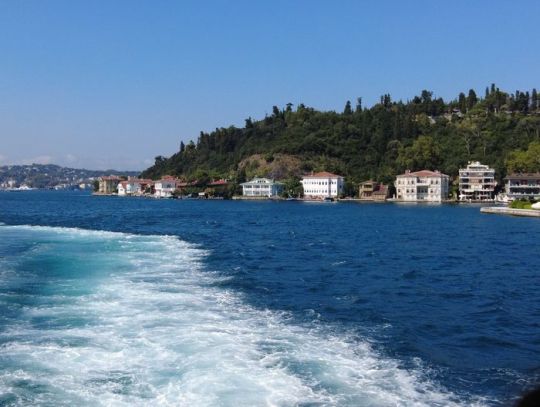
Main Temples in the Acropolis
Like in many ancient cities, the Acropolis of Byzantium held the city’s most important temples. These included the Temples of Artemis, Aphrodite, Apollo, Zeus, Poseidon, and Demeter. The Acropolis was a sacred and elevated area, used for worship and civic pride.
Entertainment Buildings on the Eastern Side
On the steep eastern slope of the Acropolis, Emperor Septimius Severus built two important entertainment structures:
A theatre for dramatic performances.
A Kynegion, where wild animals were exhibited, similar to Roman-style amphitheaters.
This design followed the tradition seen in Athens, where the Theatre of Dionysius and the Odeon were also built into the slopes of the Acropolis.
Column Honoring Claudius Gothicus
Near the tip of the promontory, a column was erected to celebrate the Roman emperor Claudius Gothicus. It still stands today. The Latin inscription on the column reads:
“Fortunae Reduci ob devictos Gothos”
This means: “To the returning Fortune, for the defeat of the Goths.” It commemorated Claudius’s victories over the Gothic tribes Sofia Sightseeing.
Stadium, Ports, and Other Public Buildings
To the north of the Acropolis stood the Stadium, where athletic events were held. Nearby were two major harbours:
The Port of Prosphorion
The Neorion Port
In the same area were several key facilities:
The Strategion, a public training ground and gathering place.
A public prison used by city authorities.
Shrines to Achilles and Ajax, legendary Greek warriors from the Trojan War.
Water Supply from Hadrian’s Aqueduct
The aqueduct built by Emperor Hadrian before Severus’s reign still provided fresh water to the city. This impressive engineering work ensured that the city had a steady water supply, which was essential for daily life and hygiene.
Life Outside the City Walls
Many people also lived outside the walls of Byzantium. According to ancient writers like Dionysius Byzantius, the countryside had small villages, temples, and public buildings. Important places included:
Blachernae, a district near the Sixth Hill, which would later become important in Byzantine times.
Sycae, famous for its fig trees, located in the area now known as Galata.
The Xerolophos, also called the “Dry Hill,” had a temple to Zeus on top. It was considered a sacred place.
The city of Byzantium, especially after being rebuilt by Septimius Severus, was a blend of religion, public entertainment, military strength, and engineering. Its Acropolis held major temples, while its public buildings, ports, and neighbourhoods extended beyond the city walls. These structures formed the foundation for what would later become the great city of Constantinople.
0 notes
Photo

Sofía’s Best Theatres
Sofia has a lively theatre scene offering a mix of comedy, drama, experimental plays, and studio performances. Here are some top venues worth visiting:
Aleko Konstantinov Satirical Theatre
Location: B‑3, ul. Stefan Karadzha 26
Phone : 987 66 06
What to Expect: A mix of classical and modern comedies with a satirical twist. The lineup often includes witty plays that cleverly critique everyday life, politics, and human nature.
Beyond the Canal (Malkiya gradski teatar “Zad kanala”)
Location: G‑8, bul. Madrid 1
What to Expect: A studio theatre hosting small-scale contemporary productions. Expect a mix of cross-genre events, including theatre performances, film projections, and live music gigs Bulgaria Vacations.
Bulgarian Army Theatre (Teatar Bulgarska Armia)
Location: B‑4, ul. Rakovski 98
Contact: 987 23 03
What to Expect: Known for high-quality drama, this theatre offers both classical plays (like Shakespeare and Chekhov) and contemporary Bulgarian works.
Ivan Vazov National Theatre
Location: B‑3, ul. Dyakon Ignatiy 5
Contact: 811 92 19
What to Expect: Sofia’s grandest and most prestigious theatre, staging large-scale performances from Bulgarian classics to international hits. The building itself is a majestic landmark in the city.
Sfumato Theatre Workshop
Location: G‑8, ul. Dimitar Grekov 2
Contact: 944 01 27
What to Expect: A cutting-edge experimental theatre with international recognition. Shows combine physical theatre, multimedia, and bold storytelling, perfect for adventurous audiences.
Tears and Laughter (Sala i Smyah)
Location: B‑4, ul. Rakovski 127
Contact: 987 58 95
What to Expect: The oldest theatre in Sofia, offering challenging modern dramas and comedies. Expect thought-provoking productions that encourage reflection and conversation.
Theatre 199
Location: B‑4, ul. Slavyanska 8
Contact: 987 85 33
What to Expect: A contemporary studio space with a 199-seat auditorium. Features experimental and innovative performances, including contemporary Bulgarian and international works. A key venue for discovering fresh, creative theatre.
Why Theatre in Sofia Matters
Affordable Prices: Ticket costs are very reasonable, often far cheaper than Western Europe.
Cultural Variety: From traditional comedies to avant-garde performances, Sofia’s theatres offer something for all tastes.
Support for Local Artists: Many theatres focus on Bulgarian playwrights and new productions.
Central Locations: Most venues are easily accessible in the city centre, making them great for a night out after dinner.
Tips for Theatre-Goers
Book ahead, especially for popular shows at the National Theatre.
Check English subtitles—some theatres offer them, especially for contemporary performances.
Arrive early to enjoy the atmosphere and perhaps have a glass of wine or coffee.
Ask about student/senior discounts—many theatres offer them.
0 notes
Photo

Attacks on Schools
The Carnegie Commission describes how the Greek and Serbian armies took control of Bulgarian schools. These schools were important centers of Bulgarian culture and education. According to the report:
When the Greek and Serbian forces arrived in a town, their first action was to close the schools and use them as places for the soldiers to stay.
The teachers were gathered together and told that if they didn’t agree to teach in Greek or Serbian, they would no longer be needed. Those who refused to teach in those languages and continued to declare themselves as Bulgarians faced persecution.
The severity of the persecution varied, but in many cases, if the teachers refused to cooperate, they were either allowed to leave for Bulgaria or sent to prison in Salonica or Uskub Turkey Sightseeing.
Persecution of Priests and Bishops
Next, the priests and bishops were targeted. The Carnegie Commission explains:
The priests were first pressured to change the language used in their church services. They were also forced to accept Serbian or Greek religious authorities.
The priests were ordered to mention the names of these new authorities in the church liturgy.
If a priest resisted, their Exarchate (the Bulgarian Church) was taken away from them and given to the Greek Patriarchate. They were also forbidden from communicating with their congregation. Any small act of disobedience led to accusations of political propaganda or treason.
Persecution of Bishops
The bishops faced even harsher treatment. For example:
Bishop Neophyte of Keles and Bishop Cosmas of Debra were both expelled.
Archimandrite Methodius, the bishop of Uskub, faced even worse treatment. According to the Carnegie Commission:
Methodius was forced out of his house and locked in a room. He was beaten by four soldiers until he lost consciousness.
After being thrown into the street, he managed to escape and find shelter in a nearby house owned by a Frenchman. This man helped him by informing the French Consul in Uskub about what happened.
Under the Consul’s protection, Methodius left for Salonica, where he was examined by foreign doctors. The doctors confirmed his story and found his injuries were serious.
This persecution of religious leaders and educators was part of a wider effort to suppress Bulgarian identity in the territories controlled by Serbia and Greece after the war. The Carnegie Commission’s report highlights the harsh treatment of the Bulgarian people and the efforts to erase their cultural and religious heritage.
0 notes
Photo
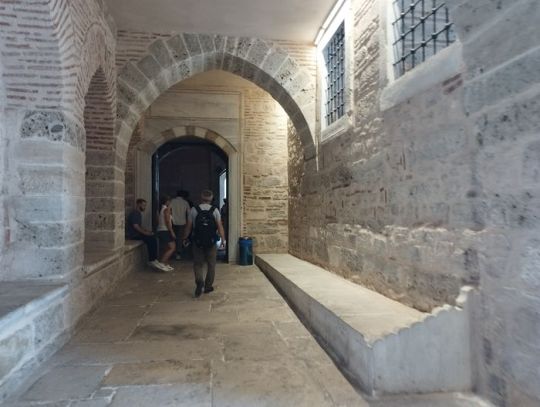
The Labour Camp System in Bulgaria
Overview of Labour Camps
After the establishment of the communist regime in Bulgaria in 1944, the country set up a system of labour camps to imprison political opponents, perceived enemies, and people seen as a threat to the regime. According to Peter Gogov, the chief of the Lovech Labour Camp, there were about 44 labour camps in Bulgaria between 1945 and 1962. However, other sources suggest that there were as many as 83 labour camps in total, spread across different locations, and operating for varying lengths of time during this period.
Some Notable Labour Camps in Bulgaria
Zeleni Dol (Blagoevgrad Region)
This was the first labour camp in Bulgaria after the communist takeover. It was established in September 1944, following the demand of the Soviet occupational forces. The camp housed 203 people, including German citizens and German women married to Bulgarians. The camp operated until December 1945 Istanbul Day Trips.
Sveti Vratch Station (Sandanski)
A labour camp was set up in January 1945 near the town of Sandanski. The camp held political prisoners and other people considered undesirable by the regime.
Kutziyan Mine (Pernik Region)
This camp operated from October 1945 until the end of 1949. It primarily housed counter-revolutionary Russians. In 1948, it also became the location for many supporters of Nikola Petkov’s Agrarian Party, which was seen as a political threat to the government.
“Black Sea” Mine (Bourgas)
Located near Bourgas, this camp was in operation from January to April 1945. It was another location used to imprison those deemed enemies of the state.
Bogdanov Dol (Pernik Region)
Operating from spring 1945 until 1951, this camp was situated in the Pernik region and was used to imprison individuals seen as a threat to the regime.
“Tolbukhin” Ore Mine
This was another mining camp, used during the period to imprison political prisoners and others opposing the regime.
Nikolaevo Mine (Stara Zagora Region)
This camp operated from 1948 until July 1949 in the Stara Zagora region. It was used to house various prisoners, particularly those seen as enemies of the communist government.
“Rositza” Dam
Located near a dam, this camp was active from October 1946 to 1948. It housed political prisoners and other undesirable elements.
Nozharevo (Silistra Region)
This camp operated from mid-1947 until mid-1952 in the Silistra region. It was used to imprison a wide range of political prisoners.
Boyana Village (Tutrakan Region)
A women’s camp was set up at Boyana village at the beginning of 1947. This camp was used to house women who were considered to be enemies of the state.
Veliko Tarnovo (Outskirts)
A women’s camp was also set up on the outskirts of Veliko Tarnovo in 1947, aimed at imprisoning women accused of anti-government activities.
Bosna Camp (Tutrakan Region)
Set up in 1947, this camp was located in the Tutrakan region, used for political opponents and others the regime wanted to suppress.
Boshuliya Camp (Pazardjik Region)
Operating from 1945 until 1949, the Boshuliya camp was another site for imprisoning political prisoners.
Belene (Danube River Islands)
Belene became one of the most infamous camps. It was established in April 1949 by a Council of Ministers’ decree. Located on several Danube river islands, it housed political opponents of the Communist Party. The first year saw 800 prisoners interned, and by 1953, the number had risen to 1,917 prisoners. They faced sentences ranging from 6 months to 7 years. The camp was closed temporarily from 5 September to 5 November 1956.
The establishment of these labour camps was a key part of the Bulgarian government’s strategy to suppress political dissent and maintain control over the population. Many of these camps were used to imprison individuals for simply opposing the Communist regime or for their perceived political views. The Belene camp, in particular, became a symbol of the oppressive nature of the communist government, with thousands of people suffering under brutal conditions. The legacy of these camps is a reminder of the harsh realities of life under communist rule in Bulgaria.
0 notes
Photo
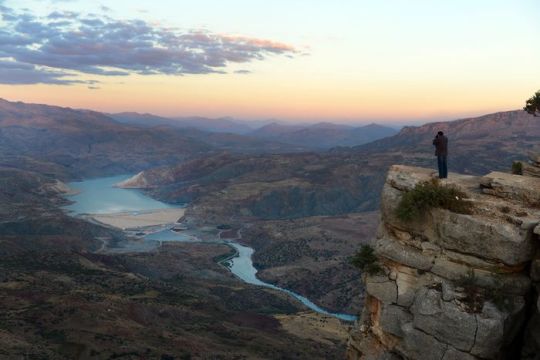
Conferences to Discuss Women's Rights
Between 1924 and 1929, several conferences were held in different cities: Belgrade (1924), Athens (1925), Prague (1927), and Warsaw (1929). These meetings were organized to track progress on women’s issues in the countries that were part of the Little Entente of Women. The conferences encouraged countries to work together on various topics, such as:
Equal voting rights for women Protecting children and minorities Improving the rights of children born outside of marriage Abolishing the death penalty Teaching about civilization instead of war in history lessons Prominent leaders in the Little Entente of Women included Alexandrina Cantacuzino from Romania, Petkovitch from Serbia, Avra Theodoropoulou from Greece, and Justyna Budziiiska-Tylicka from Poland.
Challenging Stereotypes About Women’s Movements in the Balkans
The activities of these women show that there was real progress in women’s rights in the Balkans, despite common beliefs that these regions had little to no change in women’s conditions. Eric Hobsbawm once wrote that in many parts of the world, including Eastern Europe, women’s rights were not improving. However, the work done by women in the Balkans contradicts this view Adventure Balkan Tours.
While the upper and middle classes in Southeastern Europe were smaller compared to the West, they still produced a significant number of women who became active in areas that were once only for men. These women were able to make an impact, and many became well-known leaders in their communities.
Notable Women Activists in the Balkans
There were many important women activists in the Balkans who made a difference. Some of these women include:
Vela Blagoeva, Anna Karima, Dimitrana Ivanova, and Elissaveta Karamichailova from Bulgaria Callirhoe Parren and Avra Theodoropoulou from Greece Calypso Botez and Alexandrina Cantacuzino from Romania Fatma Aliye Hanum and Halide Edip Adivar from Turkey Dragojla Jarnevic and Maria Juric-Zagorka from Croatia Draga Dejanovic and Isidora Sekulic from Serbia These women played key roles in advancing women’s rights and helped change the course of history in their countries.
0 notes
Photo

The People of Elbasan and Albania
If the Albanians were to stop their family feuds, end their clan wars, and come together as one nation, Elbasan would be the capital. It is the most central town in Albania. However, this is unlikely to happen as long as the current fighting spirit remains in the hearts of the mountain warriors.
The Fierce Independence of the Albanians
Like other mountain people around the world, Albanians are more independent, defiant, and sometimes aggressive than those who live on flatter land. In the northern part of Albania, in the Dibra district, the hatred of the Turks is so strong that a Turkish person’s life is not safe. In the southern parts, the anger towards the ruling power is less intense, and it decreases as you move further south. By the time you reach the Greek border, the resentment is almost gone Istanbul Tour Guide.
Differences in the People of North and South Albania
A week of hard travel by horse will take you from the north to the south of Albania. Along the way, you will notice big differences in appearance. The northern people are shorter, darker, and have sharp, watchful eyes, ready to defend their honor or confront anyone who insults them. Albanians today come from many different backgrounds—Italian, Greek, Slavic, and Bulgarian. Their ancestors fled to these mountains many years ago to escape foreign conquerors. While they have often united against outside invaders, old tribal rivalries have never disappeared.
Albania and Scotland: Similarities Between Two Warrior Cultures
To give a simple comparison, Albania’s situation is similar to Scotland’s Highlands in the 16th century, when the clans were constantly fighting each other. Many times, I thought about the similarities between Albania and Scotland. Some parts of Albania look just like the Scottish Highlands. Both places share a deep love for their country. Just like the Scottish Highlanders, Albanians quickly take offense and are ready to fight anyone who disagrees with them. The Albanian quilted petticoat looks similar to the Highland kilt. And, if you were to hear Albanian music in the hills, you might almost think you were listening to the sound of bagpipes.
The Albanian Clan System
The Albanians respect the authority of their own Bey, or chieftain, but they reject the rule of the Turks. Each clan leader has the power to punish any member who goes against the tribe’s interests. Every valley in Albania has its own Bey, and many of these valleys are in a state of war with each other. Clansmen are often too afraid to cross into neighboring valleys for fear of being attacked. This caused me problems because it was hard to find guides who could lead me over the mountains to reach the villages or towns I wanted to visit. Many guides either didn’t know the route or were afraid to take me because of the danger.
0 notes
Photo

The Power of Being English
There are some rewards in being away from England. An Englishman feels more proud of being English when he is far from home. In London, he might complain about his country, but if anyone tries to say something bad about it in front of him while he’s in Constantinople, he won’t tolerate it! The Vice-Consul knows that England is highly respected in the Balkans. The Turkish people remember that when the Russians were about to take over Constantinople, it was England that stopped them. Today, even though many countries are pressuring Turkey, the Turk knows that England does not want to take over any land—unlike Russia or Austria, who are eager to control parts of the Balkans.
Respect in Turkey
Back in England, the Vice-Consul would walk down the street without anyone noticing him. But in Turkey, he is treated with great respect. He is always greeted by officials and soldiers on guard. They salute him and present arms when he passes.
Official Visits
When the Vice-Consul visits the Vali (the Governor), he dresses in his frock coat and silk hat, which he brought from England many years ago. These clothes might seem old-fashioned to someone just arriving from London. He is the only Consul in the area who speaks Turkish fluently, so the Vali appreciates him. During their meetings, they drink syrupy coffee, smoke cigarettes, and discuss local issues, like the harsh treatment of Christians in a nearby village. The Vali promises to improve things, but things rarely change.
The Relationship Between Consuls
The Vice-Consul also visits other foreign diplomats, including Russian, French, Austrian, Italian, Greek, and Servian Consuls. They all return the visit within 24 hours, but there is no real friendship between them. Most of the time, they watch each other closely, spying on one another through their interpreters and writing reports.
The Vice-Consul’s Work
The Vice-Consul always keeps his eyes and ears open. He has to be careful when hearing stories about the Turks, especially when the stories come from Armenians, Bulgarians, or Greeks, because they might be biased. If he stays up to date with modern tools, he will have a typewriter to make copies of his reports. If not, he must write the reports by hand. He writes four copies: one for the Foreign Office, one for the Ambassador, one for his Consul-General, and one for his own records.
0 notes
Photo

Arrival in Gabrova
The Turkish-Like Town
I arrived in Gabrova, a town that felt very Turkish with more mosques than churches. It is a busy place, known for trading leather and wool products.
The Inn
The inn where I stayed was dirty, and I had to pay three francs for the room, which seemed too much. It was also difficult to find food because it was a Church fast day. Luckily, I found an old Turkish man who didn’t care about the Christian rules and managed to get me some fish—just four small sprats. With a piece of bread and a pint of wine, this became dinner for me and my companion Bulgarian Coast.
Early Morning Departure
A Busy Morning
At 5:00 in the morning, I heard a knock at my door. Within ten minutes, I was in the inn yard, ready to leave. I had rented four horses the night before. I chose the best horse, a wild stallion, for myself, gave the second best to my companion, and left the guide to choose between the last two horses, one for him and one for carrying our bags.
We didn’t have time for breakfast, just a tiny cup of coffee, no bigger than a couple of thimbles. So, we saddled up and set off at dawn.
Riding in a Turkish Saddle
My saddle was Turkish. Throughout the day, I realized that a Turk’s body must be shaped differently than a Briton’s. The high pommel, the brass decorations, and the shovel-like stirrups might look nice in a painting, but they were not comfortable for riding. Plain pigskin saddles are much better.
The Joy of the Morning Ride
Despite the uncomfortable saddle and not having had breakfast, the joy of early morning riding made me want to sing. We sang as we cantered along. We greeted the peasants working in the fields, and we met groups of them heading into town to sell goods. The men drove goats, the married women worked on spinning wool as they walked, and the young women wore red flowers in their hair to show they were open to being courted.
0 notes
Photo
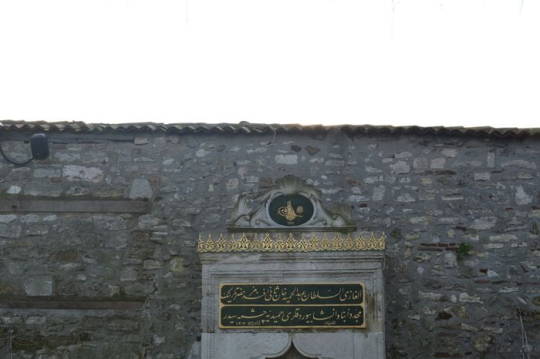
Human Rights and Freedoms
List of Deprived Rights
Under the oppressive regime, citizens have faced numerous violations of their basic human rights and freedoms. Some of the key rights that have been denied include:
The right to life and safety Protection from arbitrary arrest, detention, or exile The right to freedom of movement Freedom of thought, conscience, and religion The right to express beliefs and opinions Freedom of speech and press The right to organize, gather, and associate The right to vote, including the ability to elect representatives and be elected Freedom to leave and return to the country Freedom to choose a place of residence Equal access to public and state jobs Protection from discrimination The right to access information And many others
Information Withheld About Chernobyl
One of the most significant instances of the regime’s disregard for citizens’ rights occurred after the Chernobyl disaster on 26 April 1986. This tragic event marked the worst nuclear accident in history, yet the communist leaders in Bulgaria chose to withhold crucial information about its dangers Private Tours Bulgaria Varna.
In the days and weeks following the disaster, the government made efforts to keep the truth from the public. They did not warn citizens about the potential health hazards posed by radioactive fallout, while ensuring their own families were safe. For instance, authorities failed to inform the population that a large cloud of radioactive particles was heading towards Bulgaria.
May Day Parades Amidst Danger
On 1 May 1986, at the peak of radioactive contamination in Bulgaria due to Chernobyl, the communist regime organized mandatory May Day parades. Instead of taking precautions, citizens were forced to participate in these public celebrations. Many families enjoyed picnics in parks, sports fans filled stadiums, and children played outside, completely unaware of the health risks surrounding them.
Meanwhile, well-informed officials hid in the safety of their concrete offices and homes. They took extra precautions by stockpiling medications and ensuring their families had access to safe food and beverages. This stark contrast highlights the government’s indifference to the well-being of its citizens while prioritizing its own safety.
The denial of basic human rights and the manipulation of information by the Bulgarian regime exemplify the struggle for freedom faced by its citizens. The Chernobyl disaster serves as a tragic reminder of how governments can fail to protect their people. It is essential to remember these events and advocate for human rights to ensure such violations do not occur again. Citizens deserve to know the truth, have the freedom to move, and live without fear of oppression.
0 notes
Photo
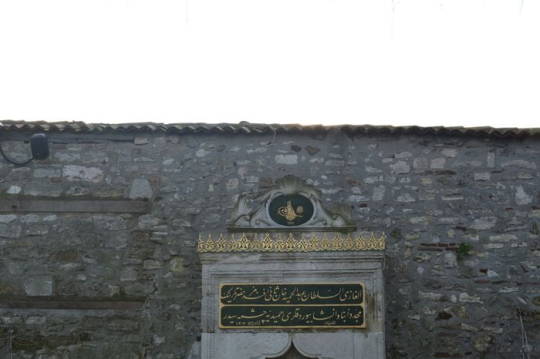
Human Rights and Freedoms
List of Deprived Rights
Under the oppressive regime, citizens have faced numerous violations of their basic human rights and freedoms. Some of the key rights that have been denied include:
The right to life and safety Protection from arbitrary arrest, detention, or exile The right to freedom of movement Freedom of thought, conscience, and religion The right to express beliefs and opinions Freedom of speech and press The right to organize, gather, and associate The right to vote, including the ability to elect representatives and be elected Freedom to leave and return to the country Freedom to choose a place of residence Equal access to public and state jobs Protection from discrimination The right to access information And many others
Information Withheld About Chernobyl
One of the most significant instances of the regime’s disregard for citizens’ rights occurred after the Chernobyl disaster on 26 April 1986. This tragic event marked the worst nuclear accident in history, yet the communist leaders in Bulgaria chose to withhold crucial information about its dangers Private Tours Bulgaria Varna.
In the days and weeks following the disaster, the government made efforts to keep the truth from the public. They did not warn citizens about the potential health hazards posed by radioactive fallout, while ensuring their own families were safe. For instance, authorities failed to inform the population that a large cloud of radioactive particles was heading towards Bulgaria.
May Day Parades Amidst Danger
On 1 May 1986, at the peak of radioactive contamination in Bulgaria due to Chernobyl, the communist regime organized mandatory May Day parades. Instead of taking precautions, citizens were forced to participate in these public celebrations. Many families enjoyed picnics in parks, sports fans filled stadiums, and children played outside, completely unaware of the health risks surrounding them.
Meanwhile, well-informed officials hid in the safety of their concrete offices and homes. They took extra precautions by stockpiling medications and ensuring their families had access to safe food and beverages. This stark contrast highlights the government’s indifference to the well-being of its citizens while prioritizing its own safety.
The denial of basic human rights and the manipulation of information by the Bulgarian regime exemplify the struggle for freedom faced by its citizens. The Chernobyl disaster serves as a tragic reminder of how governments can fail to protect their people. It is essential to remember these events and advocate for human rights to ensure such violations do not occur again. Citizens deserve to know the truth, have the freedom to move, and live without fear of oppression.
0 notes
Photo
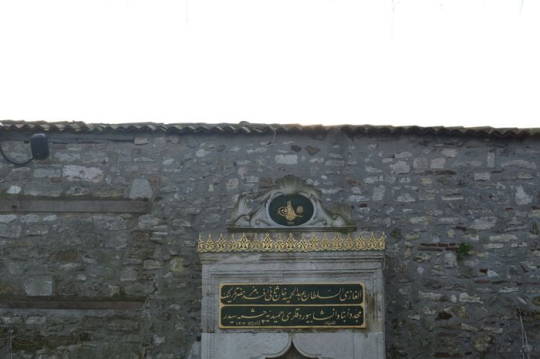
Human Rights and Freedoms
List of Deprived Rights
Under the oppressive regime, citizens have faced numerous violations of their basic human rights and freedoms. Some of the key rights that have been denied include:
The right to life and safety Protection from arbitrary arrest, detention, or exile The right to freedom of movement Freedom of thought, conscience, and religion The right to express beliefs and opinions Freedom of speech and press The right to organize, gather, and associate The right to vote, including the ability to elect representatives and be elected Freedom to leave and return to the country Freedom to choose a place of residence Equal access to public and state jobs Protection from discrimination The right to access information And many others
Information Withheld About Chernobyl
One of the most significant instances of the regime’s disregard for citizens’ rights occurred after the Chernobyl disaster on 26 April 1986. This tragic event marked the worst nuclear accident in history, yet the communist leaders in Bulgaria chose to withhold crucial information about its dangers Private Tours Bulgaria Varna.
In the days and weeks following the disaster, the government made efforts to keep the truth from the public. They did not warn citizens about the potential health hazards posed by radioactive fallout, while ensuring their own families were safe. For instance, authorities failed to inform the population that a large cloud of radioactive particles was heading towards Bulgaria.
May Day Parades Amidst Danger
On 1 May 1986, at the peak of radioactive contamination in Bulgaria due to Chernobyl, the communist regime organized mandatory May Day parades. Instead of taking precautions, citizens were forced to participate in these public celebrations. Many families enjoyed picnics in parks, sports fans filled stadiums, and children played outside, completely unaware of the health risks surrounding them.
Meanwhile, well-informed officials hid in the safety of their concrete offices and homes. They took extra precautions by stockpiling medications and ensuring their families had access to safe food and beverages. This stark contrast highlights the government’s indifference to the well-being of its citizens while prioritizing its own safety.
The denial of basic human rights and the manipulation of information by the Bulgarian regime exemplify the struggle for freedom faced by its citizens. The Chernobyl disaster serves as a tragic reminder of how governments can fail to protect their people. It is essential to remember these events and advocate for human rights to ensure such violations do not occur again. Citizens deserve to know the truth, have the freedom to move, and live without fear of oppression.
0 notes
Photo
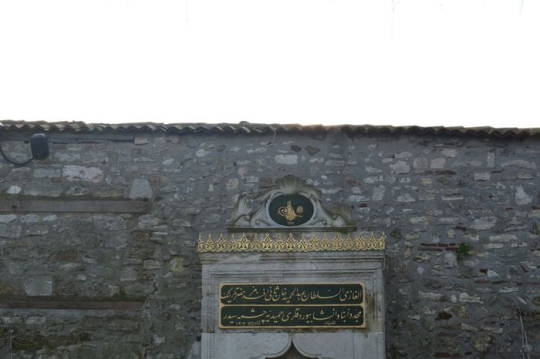
Human Rights and Freedoms
List of Deprived Rights
Under the oppressive regime, citizens have faced numerous violations of their basic human rights and freedoms. Some of the key rights that have been denied include:
The right to life and safety Protection from arbitrary arrest, detention, or exile The right to freedom of movement Freedom of thought, conscience, and religion The right to express beliefs and opinions Freedom of speech and press The right to organize, gather, and associate The right to vote, including the ability to elect representatives and be elected Freedom to leave and return to the country Freedom to choose a place of residence Equal access to public and state jobs Protection from discrimination The right to access information And many others
Information Withheld About Chernobyl
One of the most significant instances of the regime’s disregard for citizens’ rights occurred after the Chernobyl disaster on 26 April 1986. This tragic event marked the worst nuclear accident in history, yet the communist leaders in Bulgaria chose to withhold crucial information about its dangers Private Tours Bulgaria Varna.
In the days and weeks following the disaster, the government made efforts to keep the truth from the public. They did not warn citizens about the potential health hazards posed by radioactive fallout, while ensuring their own families were safe. For instance, authorities failed to inform the population that a large cloud of radioactive particles was heading towards Bulgaria.
May Day Parades Amidst Danger
On 1 May 1986, at the peak of radioactive contamination in Bulgaria due to Chernobyl, the communist regime organized mandatory May Day parades. Instead of taking precautions, citizens were forced to participate in these public celebrations. Many families enjoyed picnics in parks, sports fans filled stadiums, and children played outside, completely unaware of the health risks surrounding them.
Meanwhile, well-informed officials hid in the safety of their concrete offices and homes. They took extra precautions by stockpiling medications and ensuring their families had access to safe food and beverages. This stark contrast highlights the government’s indifference to the well-being of its citizens while prioritizing its own safety.
The denial of basic human rights and the manipulation of information by the Bulgarian regime exemplify the struggle for freedom faced by its citizens. The Chernobyl disaster serves as a tragic reminder of how governments can fail to protect their people. It is essential to remember these events and advocate for human rights to ensure such violations do not occur again. Citizens deserve to know the truth, have the freedom to move, and live without fear of oppression.
0 notes
Photo
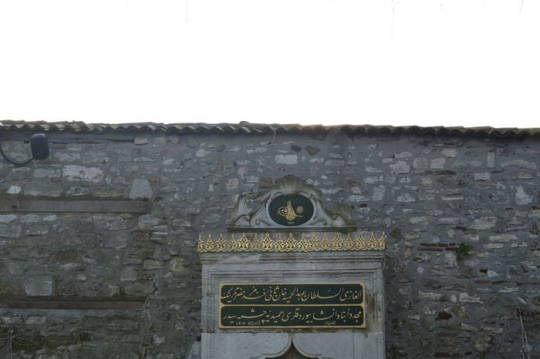
Human Rights and Freedoms
List of Deprived Rights
Under the oppressive regime, citizens have faced numerous violations of their basic human rights and freedoms. Some of the key rights that have been denied include:
The right to life and safety Protection from arbitrary arrest, detention, or exile The right to freedom of movement Freedom of thought, conscience, and religion The right to express beliefs and opinions Freedom of speech and press The right to organize, gather, and associate The right to vote, including the ability to elect representatives and be elected Freedom to leave and return to the country Freedom to choose a place of residence Equal access to public and state jobs Protection from discrimination The right to access information And many others
Information Withheld About Chernobyl
One of the most significant instances of the regime’s disregard for citizens’ rights occurred after the Chernobyl disaster on 26 April 1986. This tragic event marked the worst nuclear accident in history, yet the communist leaders in Bulgaria chose to withhold crucial information about its dangers Private Tours Bulgaria Varna.
In the days and weeks following the disaster, the government made efforts to keep the truth from the public. They did not warn citizens about the potential health hazards posed by radioactive fallout, while ensuring their own families were safe. For instance, authorities failed to inform the population that a large cloud of radioactive particles was heading towards Bulgaria.
May Day Parades Amidst Danger
On 1 May 1986, at the peak of radioactive contamination in Bulgaria due to Chernobyl, the communist regime organized mandatory May Day parades. Instead of taking precautions, citizens were forced to participate in these public celebrations. Many families enjoyed picnics in parks, sports fans filled stadiums, and children played outside, completely unaware of the health risks surrounding them.
Meanwhile, well-informed officials hid in the safety of their concrete offices and homes. They took extra precautions by stockpiling medications and ensuring their families had access to safe food and beverages. This stark contrast highlights the government’s indifference to the well-being of its citizens while prioritizing its own safety.
The denial of basic human rights and the manipulation of information by the Bulgarian regime exemplify the struggle for freedom faced by its citizens. The Chernobyl disaster serves as a tragic reminder of how governments can fail to protect their people. It is essential to remember these events and advocate for human rights to ensure such violations do not occur again. Citizens deserve to know the truth, have the freedom to move, and live without fear of oppression.
0 notes
Photo
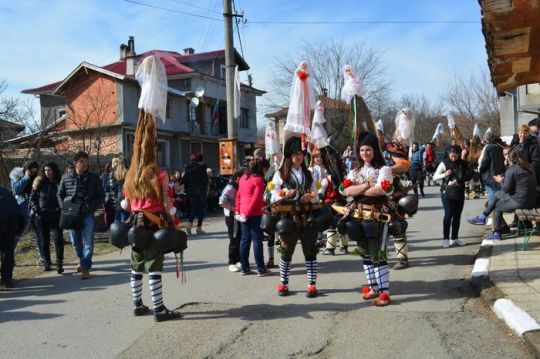
Pressure on the Clergy and Forced Resettlement in Bulgaria
State Control Over Religion
Alongside strict laws and regulations, the Bulgarian secret services put additional pressure on the clergy by recruiting many of them as agents or informers. The State Security’s Department One, responsible for combating what it called “counter-revolution,” included a section specifically for “Clergy and Sects.” This section conducted special operations aimed at the Bulgarian Orthodox Church, the Catholic Church, and various Protestant denominations.
In 1949, this section undertook 20 active underground operations, 24 preliminary investigations, and 240 surveillance and reporting missions, all carried out by 339 agents. By 1981, out of 5,000 agents in Department Six of the Bulgarian State Security, 278 were focused on operations targeting religious groups. By the end of the communist regime in 1989, this number had doubled, indicating a persistent effort to control and monitor religious practices.
Forcible Resettlement of Citizens
The communist authorities employed harsh measures against citizens and their families who were viewed as enemies of the regime. One method was the forcible resettlement of these individuals from cities and border regions to remote villages and smaller settlements. Once relocated, these citizens were not allowed to leave their new homes https://istanbulday.com/istanbul-daily-tour/Istanbul Daily Tour The regime particularly targeted intellectuals, dismissed military officers, industrialists, businessmen, and lawyers who had fallen out of favor. A joint report by the Speaker of the House and the Minister of the Interior, sent to the Politburo of the Central Committee of the Bulgarian Communist Party, revealed that from September 9, 1944, to August 1953, a total of 7,025 families, comprising 24,624 members, were removed from major cities. The actual number was likely higher. Specifically, 2,548 families were relocated from Sofia alone, while 4,208 families from border regions were also affected.
Breakdown of Resettlement
Here is a breakdown of the reasons for resettlement:
Reasons for Resettlement Number of Resettled Families Number of Family Members Relatives of ‘renegades’ (those who escaped to the West) 2,397 9,739 Considered ‘enemies of the people’ and threats to the regime 4,359 13,651 Other reasons 169 1,224 Total 7,025 24,624
The 1953 Ordinance for Resettlement
In March 1953, Georgi Tzankov, the Minister of the Interior, issued a strictly confidential ordinance aimed at further purging cities and border areas of “hostile characters.” He ordered preparations for the resettlement of families of “renegades” and non-returners living in Sofia, Burgas, Varna (then known as Stalin), Plovdiv, and other border areas.
The ordinance outlined that these families should be relocated to interior settlements within the country. Tzankov instructed superior officers from Interior Ministry stations in Sofia and district centers to identify all members of the families of renegades and submit proposals for their internment by March 20, 1953.
The systematic persecution of the clergy and the forced resettlement of perceived enemies exemplify the oppressive measures taken by the Bulgarian communist regime. These actions aimed to eliminate dissent and maintain strict control over religious and social life in Bulgaria, creating an atmosphere of fear and repression that affected countless individuals and families.
0 notes
Photo
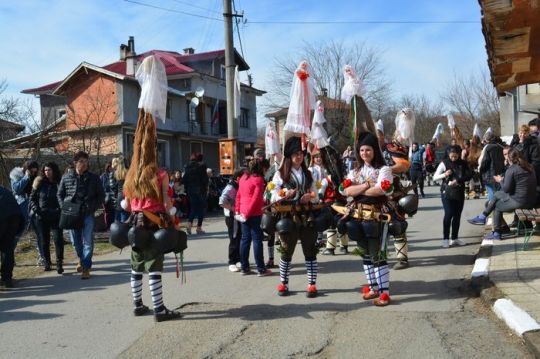
Pressure on the Clergy and Forced Resettlement in Bulgaria
State Control Over Religion
Alongside strict laws and regulations, the Bulgarian secret services put additional pressure on the clergy by recruiting many of them as agents or informers. The State Security’s Department One, responsible for combating what it called “counter-revolution,” included a section specifically for “Clergy and Sects.” This section conducted special operations aimed at the Bulgarian Orthodox Church, the Catholic Church, and various Protestant denominations.
In 1949, this section undertook 20 active underground operations, 24 preliminary investigations, and 240 surveillance and reporting missions, all carried out by 339 agents. By 1981, out of 5,000 agents in Department Six of the Bulgarian State Security, 278 were focused on operations targeting religious groups. By the end of the communist regime in 1989, this number had doubled, indicating a persistent effort to control and monitor religious practices.
Forcible Resettlement of Citizens
The communist authorities employed harsh measures against citizens and their families who were viewed as enemies of the regime. One method was the forcible resettlement of these individuals from cities and border regions to remote villages and smaller settlements. Once relocated, these citizens were not allowed to leave their new homes https://istanbulday.com/istanbul-daily-tour/Istanbul Daily Tour The regime particularly targeted intellectuals, dismissed military officers, industrialists, businessmen, and lawyers who had fallen out of favor. A joint report by the Speaker of the House and the Minister of the Interior, sent to the Politburo of the Central Committee of the Bulgarian Communist Party, revealed that from September 9, 1944, to August 1953, a total of 7,025 families, comprising 24,624 members, were removed from major cities. The actual number was likely higher. Specifically, 2,548 families were relocated from Sofia alone, while 4,208 families from border regions were also affected.
Breakdown of Resettlement
Here is a breakdown of the reasons for resettlement:
Reasons for Resettlement Number of Resettled Families Number of Family Members Relatives of ‘renegades’ (those who escaped to the West) 2,397 9,739 Considered ‘enemies of the people’ and threats to the regime 4,359 13,651 Other reasons 169 1,224 Total 7,025 24,624
The 1953 Ordinance for Resettlement
In March 1953, Georgi Tzankov, the Minister of the Interior, issued a strictly confidential ordinance aimed at further purging cities and border areas of “hostile characters.” He ordered preparations for the resettlement of families of “renegades” and non-returners living in Sofia, Burgas, Varna (then known as Stalin), Plovdiv, and other border areas.
The ordinance outlined that these families should be relocated to interior settlements within the country. Tzankov instructed superior officers from Interior Ministry stations in Sofia and district centers to identify all members of the families of renegades and submit proposals for their internment by March 20, 1953.
The systematic persecution of the clergy and the forced resettlement of perceived enemies exemplify the oppressive measures taken by the Bulgarian communist regime. These actions aimed to eliminate dissent and maintain strict control over religious and social life in Bulgaria, creating an atmosphere of fear and repression that affected countless individuals and families.
0 notes
Photo
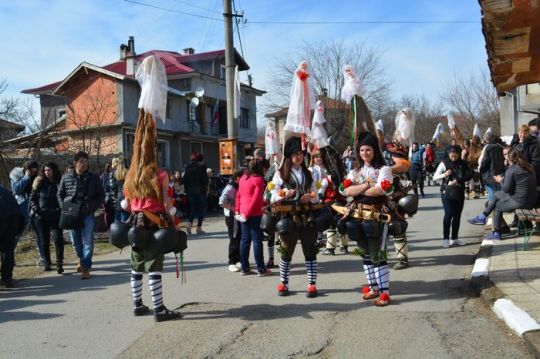
Pressure on the Clergy and Forced Resettlement in Bulgaria
State Control Over Religion
Alongside strict laws and regulations, the Bulgarian secret services put additional pressure on the clergy by recruiting many of them as agents or informers. The State Security’s Department One, responsible for combating what it called “counter-revolution,” included a section specifically for “Clergy and Sects.” This section conducted special operations aimed at the Bulgarian Orthodox Church, the Catholic Church, and various Protestant denominations.
In 1949, this section undertook 20 active underground operations, 24 preliminary investigations, and 240 surveillance and reporting missions, all carried out by 339 agents. By 1981, out of 5,000 agents in Department Six of the Bulgarian State Security, 278 were focused on operations targeting religious groups. By the end of the communist regime in 1989, this number had doubled, indicating a persistent effort to control and monitor religious practices.
Forcible Resettlement of Citizens
The communist authorities employed harsh measures against citizens and their families who were viewed as enemies of the regime. One method was the forcible resettlement of these individuals from cities and border regions to remote villages and smaller settlements. Once relocated, these citizens were not allowed to leave their new homes https://istanbulday.com/istanbul-daily-tour/Istanbul Daily Tour The regime particularly targeted intellectuals, dismissed military officers, industrialists, businessmen, and lawyers who had fallen out of favor. A joint report by the Speaker of the House and the Minister of the Interior, sent to the Politburo of the Central Committee of the Bulgarian Communist Party, revealed that from September 9, 1944, to August 1953, a total of 7,025 families, comprising 24,624 members, were removed from major cities. The actual number was likely higher. Specifically, 2,548 families were relocated from Sofia alone, while 4,208 families from border regions were also affected.
Breakdown of Resettlement
Here is a breakdown of the reasons for resettlement:
Reasons for Resettlement Number of Resettled Families Number of Family Members Relatives of ‘renegades’ (those who escaped to the West) 2,397 9,739 Considered ‘enemies of the people’ and threats to the regime 4,359 13,651 Other reasons 169 1,224 Total 7,025 24,624
The 1953 Ordinance for Resettlement
In March 1953, Georgi Tzankov, the Minister of the Interior, issued a strictly confidential ordinance aimed at further purging cities and border areas of “hostile characters.” He ordered preparations for the resettlement of families of “renegades” and non-returners living in Sofia, Burgas, Varna (then known as Stalin), Plovdiv, and other border areas.
The ordinance outlined that these families should be relocated to interior settlements within the country. Tzankov instructed superior officers from Interior Ministry stations in Sofia and district centers to identify all members of the families of renegades and submit proposals for their internment by March 20, 1953.
The systematic persecution of the clergy and the forced resettlement of perceived enemies exemplify the oppressive measures taken by the Bulgarian communist regime. These actions aimed to eliminate dissent and maintain strict control over religious and social life in Bulgaria, creating an atmosphere of fear and repression that affected countless individuals and families.
0 notes